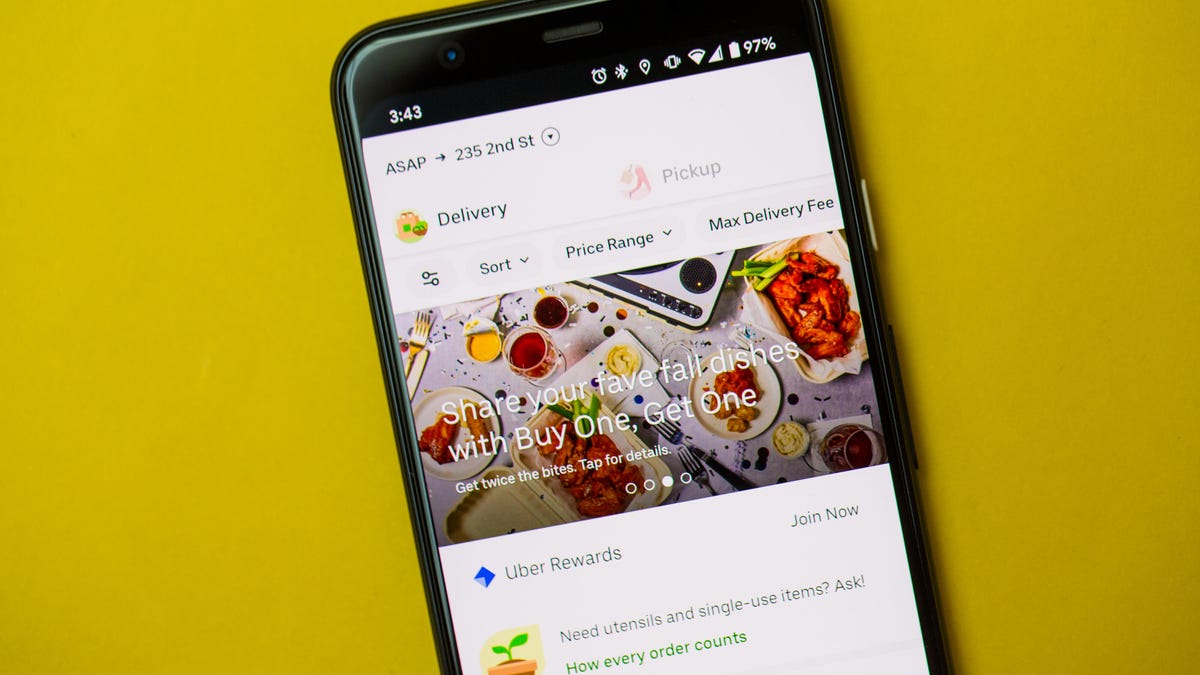Uber goes all in with grocery delivery
This could put the ride-hailing company in direct competition with Instacart.

Uber wants to be the one-stop-shop for food delivery.
As many businesses have suffered a financial blow during the novel coronavirus pandemic, grocery delivery apps have seen a surge in use. Taking advantage of the moment, Uber announced Tuesday it's adding grocery delivery to its app in several cities across the Americas.
The ride-hailing company is rolling out this new service in collaboration with the Chile-based grocery delivery startup Cornershop, which Uber bought a majority investment in last October. The acquisition has been approved by the Chilean authorities but is still pending regulatory approval in Mexico.
"Our vision is of being a one-stop-shop for all of our customers on food occasions," Raj Beri, Uber's global head of grocery, said in a press call. "We want to make sure we're able to get groceries to customers as conveniently and quickly as possible."
With shelter-in-place orders during the coronavirus pandemic, many people have increasingly relied on restaurant and grocery delivery apps to get their food. Startups like Instacart, DoorDash and Grubhub have seen their businesses skyrocket over the past few months.
The Uber app now has the option of getting groceries delivered.
While its rides business has plummeted, Uber said its restaurant delivery service Uber Eats has seen orders go up more than 100% since the same period last year. And in the more than 30 countries where Uber has been experimenting with grocery delivery, it said it's seen a 176% increase in grocery orders since February. Cornershop said it's now doing more than 1 million orders a month.
Still, on-demand food delivery is a competitive space. Caviar, Grubhub, Seamless and DoorDash do restaurant deliveries. And Instacart and Amazon Fresh offer grocery deliveries. On Monday, Uber announced it was acquiring the app Postmates, which touts itself as the "whatever-you-can-think-of" delivery app.
Uber's grocery delivery service is available as of Tuesday in 19 cities in Brazil, Chile, Colombia, Peru and Canada. It'll launch later this month in the US in Miami and Dallas. Uber said it plans to eventually make the service available worldwide.
When users in these cities open the Uber app, they'll see the icon for grocery delivery. Once they click on that, they can pick from various supermarkets. From there, they can select whatever items they'd like to add to their virtual grocery cart. They'll also have the option to select a time slot for their groceries to be delivered.
"When we started the company almost five years ago today, we really saw Uber as a benchmark," Oskar Hjertonsson, Cornershop's founder and CEO, said in the press call. "We set out to do something similar."
The technology behind Uber's grocery delivery will be powered through Cornershop. And the couriers who do the grocery drop-offs work for Cornershop, rather than Uber. If an Uber driver would like to do grocery deliveries on the app, they need to sign up through Cornershop.
While integrating with Uber, Cornershop's native app will stay accessible to users in the cities across Latin America and Canada where it's currently available.

